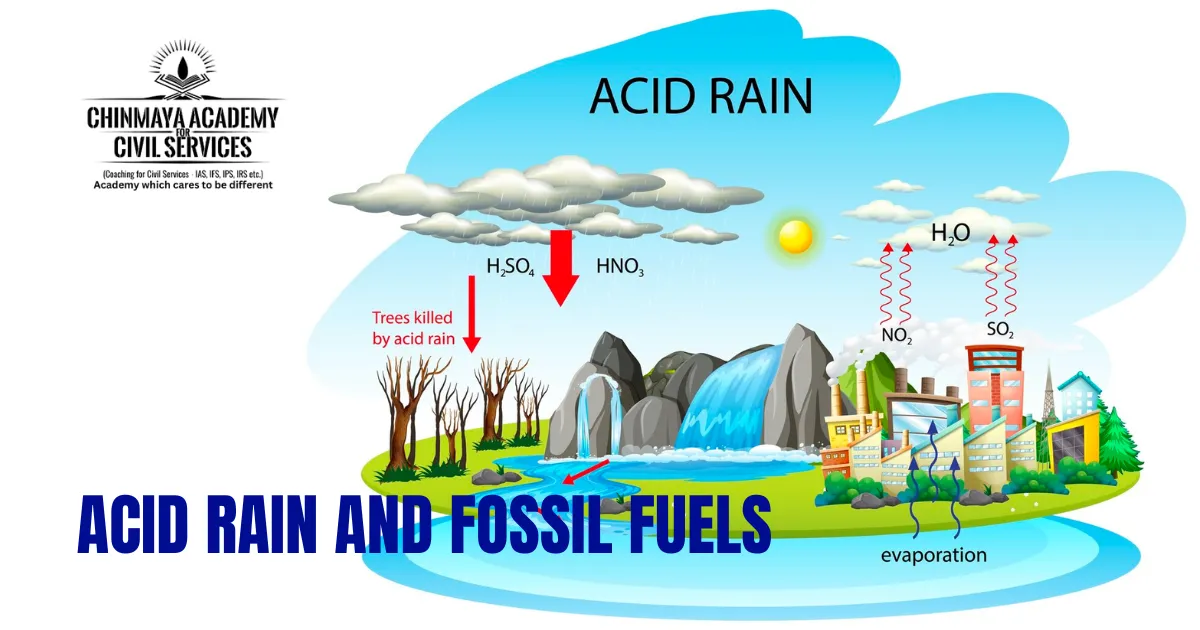
Our dependence on fossil fuels like coal, oil, and natural gas comes at a hidden cost. When burned for electricity generation, industrial processes, or transportation, these fuels release harmful pollutants into the atmosphere. The primary polutars behind acid rain are sulfur dioxide (SO2) and nitrogen oxides (NOx).
Imagine a power plant bellowing smoke stacks spewing out invisible plumes of these gases. As they rise, they mingle with the vastness of the atmosphere, unknowingly embarking on a journey that will transform them into something far more sinister.
- The atmosphere isn’t just a passive carrier of these pollutants. It’s a dynamic stage where intricate chemical reactions play out. Under the influence of sunlight, moisture, and other atmospheric gases, SO2 and NOx undergo a series of complex transformations.
- Think of it as a celestial cauldron brewing a potent concoction. The SO2 reacts with water vapor and oxygen to form sulfuric acid (H2SO4), the main component of acid rain. Similarly, NOx undergoes a series of reactions to produce nitric acid (HNO3), another acidic contributor.
The Descent of Acidity: From Cloud to Catastrophe
These newly formed acids don’t stay suspended forever. They readily combine with water molecules, becoming part of rain, snow, fog, or even hail. As these acidic droplets descend, they bring with them the potential for widespread environmental damage.
- Imagine a gentle rain, seemingly innocuous, but carrying within it the power to disrupt delicate ecosystems.
- This acidic rain falls upon forests, lakes, rivers, and even man-made structures, unleashing a cascade of harmful effects.
Impact of acid rain
The impact of acid rain is far-reaching and multifaceted.
- Ecosystem Damage: Acid rain disrupts the delicate balance of aquatic ecosystems. By lowering the pH of lakes and rivers, it creates an environment hostile to fish, amphibians, and other aquatic life. Forests also suffer, as acidic rain weakens trees and makes them more susceptible to pests and diseases.
- Infrastructure Erosion: The acidic nature of rain takes a toll on our built environment as well. Statues, monuments, and buildings constructed from limestone, marble, and other susceptible materials slowly erode under the relentless assault of acidity.
- Human Health Concerns: While the direct link between acid rain and human health issues remains under debate, some studies suggest potential connections to respiratory problems, particularly for individuals with pre-existing conditions.
Regulations:
The narrative of acid rain, however, is not one of despair. Recognizing the severity of the issue, policymakers and scientists have joined forces to combat this environmental threat.
- Stricter Emission Regulations: Stringent regulations have been implemented to curb SO2 and NOx emissions from power plants, industries, and vehicles. These measures have resulted in a significant decline in acid rain incidents over recent decades.
- Cleaner Technologies: The adoption of cleaner technologies like renewable energy sources, natural gas power plants with scrubber technology, and catalytic converters in vehicles has further reduced pollutant emissions.
- International Cooperation: Recognizing the transboundary nature of air pollution, international agreements like the Clean Air Act Amendments of 1990 in the US and the Gothenburg Protocol in Europe have fostered collaborative efforts to reduce acid rain on a global scale.
Collective Action for a Sustainable Future
The battle against acid rain serves as a powerful reminder of the interconnectedness of our environment and the impact of our choices. While significant progress has been made, the journey towards a sustainable future free from the harmful effects of acid rain is far from over. How we can be a part of the solution:
- Support renewable energy: Advocate for and adopt renewable energy sources like solar and wind power to reduce reliance on fossil fuels.
- Demand stricter emission regulations: Urge your local and national representatives to enact stricter emission standards for industries and power plants.
- Spread awareness: Educate others about the dangers of acid rain and the importance of sustainable practices.
By joining forces and taking collective action, we can continue to mitigate the effects of acid rain and build a future where clean air and healthy ecosystems are the norm, not the exception. Remember, every small step counts in this crucial endeavour.
 Chinmaya IAS Academy – Current Affairs Chinmaya IAS Academy – Current Affairs
Chinmaya IAS Academy – Current Affairs Chinmaya IAS Academy – Current Affairs
